Canoe vs Kayak? Really, which one is best for you? Questions arise when deciding which one of these non-motorized vessels is a better fit for your paddling needs. If you can only choose one, it’s often a toss-up. A definitive answer can seem not so definitive after all.
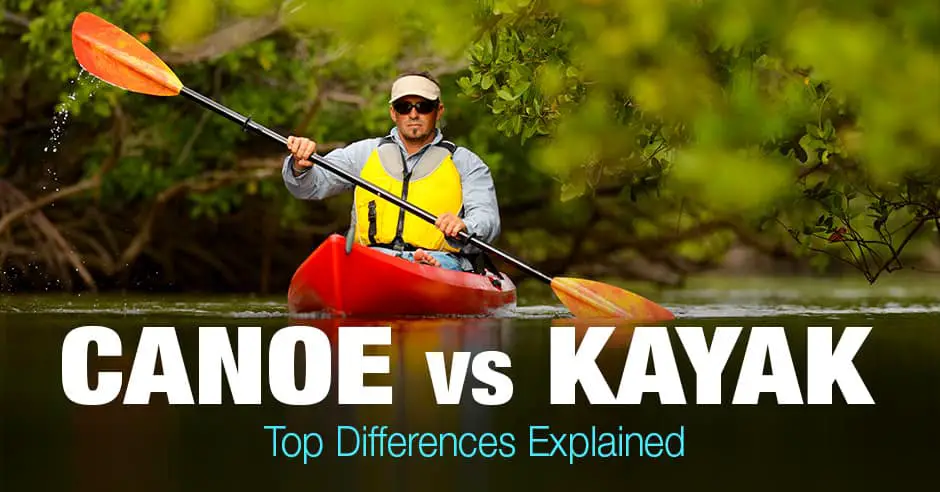
Granted, each one will get you down the river and can seem in many ways alike, but there are apparent differences. So, if you’ve got to choose sides, let’s delve into the nitty gritty and see which one ends up your BFF.
Kayak and Canoe: Health Benefits
Canoeing and kayaking are both considered a low-impact exercise but have great aerobic benefits. Make your paddle as easy or as strenuous as you wish depending on the water’s current and trip length. While paddling downstream is quite enjoyable; an upstream paddle can be invigorating.
Paddling can improve cardiovascular health and provide increased muscle strength, especially in your arms, shoulders, back and chest. Your core will gain benefit from rotating your torso and keeping yourself in an upright position as you skillfully paddle.
You’re bound to find paddling invigorating, and exciting while at the same time peaceful and meditative depending on where your paddle takes you. This provides yet another health benefit, one for your mental psyche. Nature has a way of healing.
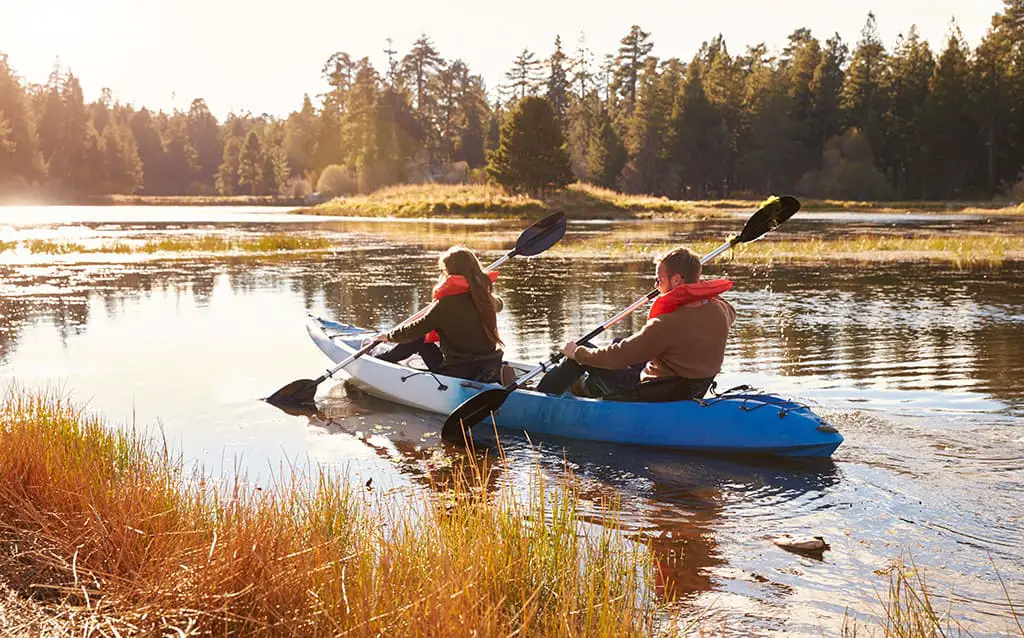
Canoe and Kayak: Characteristics
In today’s world many canoes and kayaks are both available in lightweight materials, such as fiberglass composites, plastics, aluminum or even inflatable. One or both ends form a point which make them equally ideal for efficiency and aerodynamics for smoothly gliding through the water.
Canoes and kayaks come in different lengths and widths, anything from those used as Dragon Boats to white-water and in between. With many to choose from, you are sure to find one that fits you or your family’s needs.
Both are excellent for recreational purposes, getting some fun exercise and being outdoors to relish in nature. While they do share similarities, there are more differences than one might expect.
Canoe vs Kayak: Different Strokes for Different Folks
Most everyone has seen a canoe or kayak, but have you really noted their differences? When deciding which one to purchase, you’ll want to consider what you feel more comfortable with. To be sure, renting a canoe, and on another day a kayak, could provide you with an eye-opening experience and the answer.
Design
Canoes are designed to have wider, open tops and generally two bench seats. Their sides are taller, thereby sitting higher on the water. More gear can be carried and more people. If you have a family, you can usually fit a child or two, dependent on their size, in the center of a canoe between the bench seats.
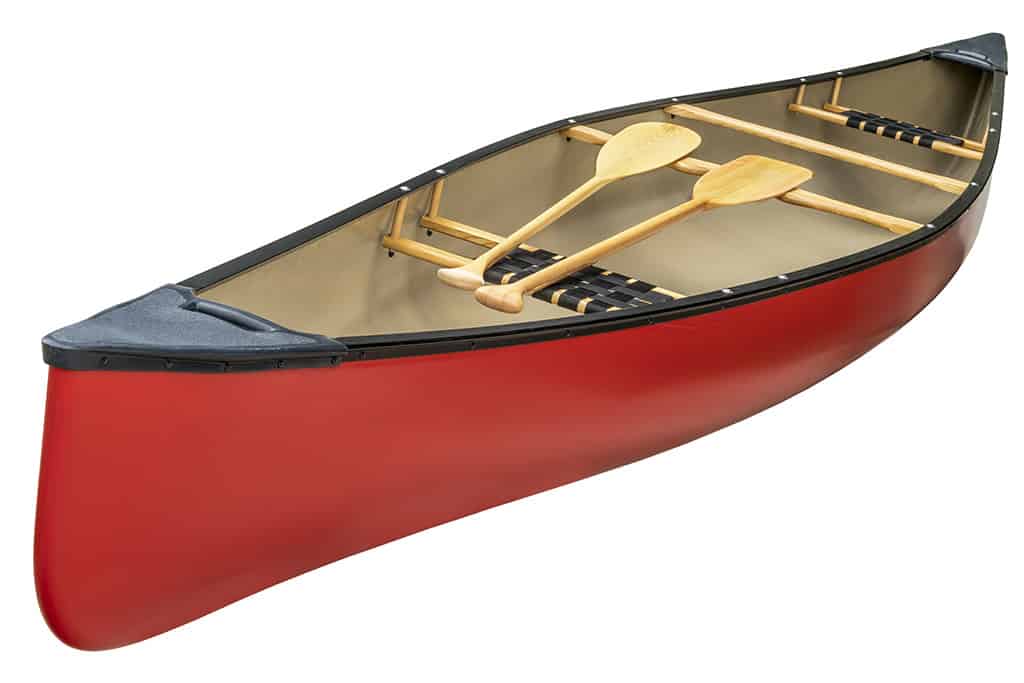
Kayaks can have an open or closed design. An open design, referred to as “sit upon” or “sit-on-top” are totally open with a seat fairly close to the center. These make excellent choices for ocean kayaking allowing water to wash over and drain easily from the kayak.
The closed designs have something similar to a cockpit, an opening for the seat for the kayaker, while his or her legs are stretched out in front under the covered top. Tandem kayaks are available in either design, however, most prefer “rowing their own boat.” The closed design is excellent for spring runs, lake or river kayaking when you know circumstances will not have the vessel taking on an inordinate amount of water.
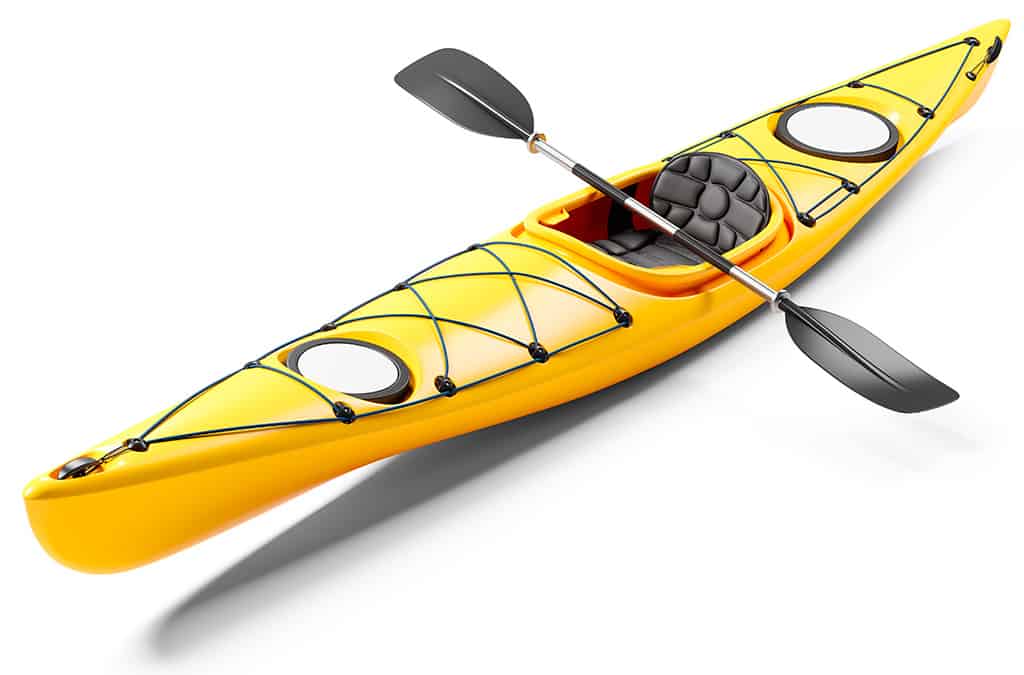
Some closed designs will have a spray skirt, a pliable waterproof fabric that can be snapped in place around the kayaker’s body, thus completely covering the sit-in portion. A skirted kayak is a must have for white-water rafting which enables the paddler to take on rapids, “roll” the kayak and pop up again without the kayak taking on any water.
Paddles
Different style paddles are necessary as canoe vs kayak accessories. While both style paddles are generally fitted for the user’s height, a canoe paddle is best suited to be as short as possible for you when seated comfortably upright and to reach the water when the paddle throat of the blade, not the shaft, is submerged. The T-grip handle should be approximately even with your nose.
Paddling a canoe generally generates a lesser amount of water inside the canoe because it sits higher off the water and the canoeist is not consistently transferring the single paddle from one side of the canoe to the other as is the case with kayaking.
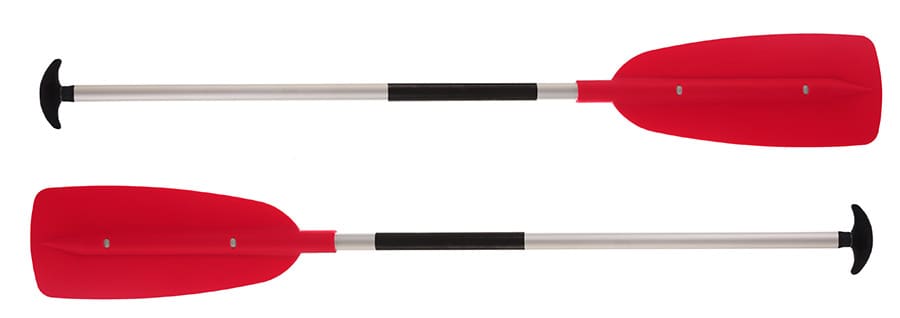
A kayaker will use a double-bladed paddle due to the seat position being just above the water line. The width of the kayak and the user’s height both come into play when choosing the right size paddle. A paddle must be long enough to move from side to side without continually hitting your hands or paddle on the side of the kayak. If the paddle is too long, you’ll have extra stress on your shoulders and the kayak will not “track” as it should through the water.

An outfitter can help size you for the appropriate paddle of choice. Charts can also be found online.
Kayakers agree their mode of transportation is known to take on a bit more water due to the paddling technique needed and the kayak’s seat position, however, in my experience, the added drops are negligible.
Seating and Comfort
Canoe bench seats allow for ease in getting in and out. At the shore, you can steady yourself by holding onto the canoe’s sides then simply step over and into the canoe or onto land as the case may be.
While bench seats are solid, aka hard, after an hour or two you may wish your tush had some cush. That’s an easy fix and accomplished by bringing a thinner, small waterproof cushion along. An idea I came up with years ago was using stadium seats. A metal clip on the underside of the cushioned stadium seat can be clipped to the canoe’s bench seat. Additionally, the stadium seat has a back to it. For recreational enjoyment, this should not impede your ability to paddle in any way. Stadium seats fold up, pack up and store in a jiff.
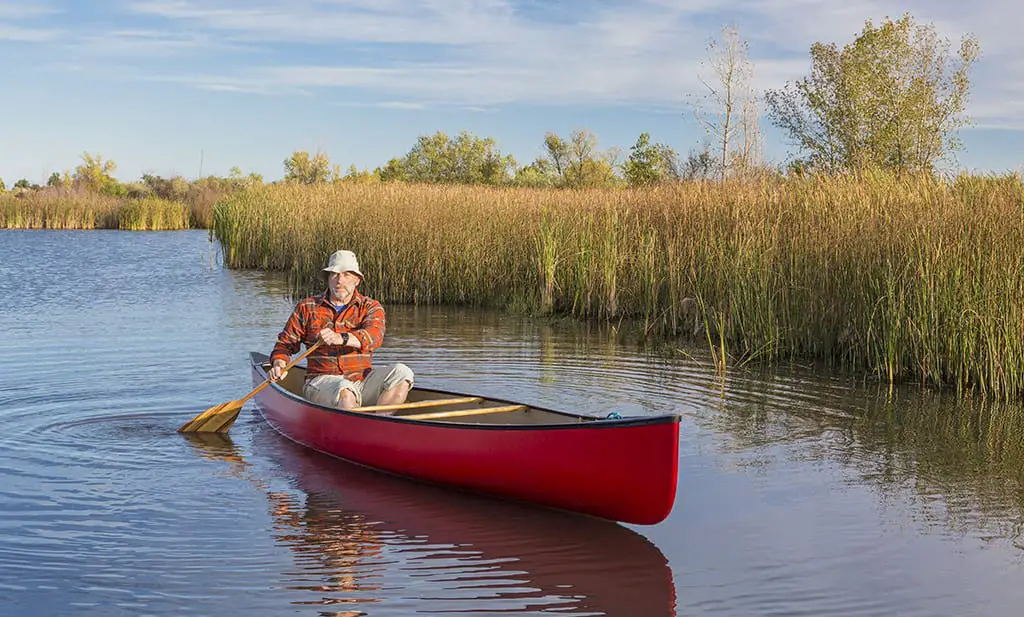
Kayaks generally have a preformed, built-in seat. The seat might be a molded plastic or one that offers a more comfortable ride. Sit-in kayaks usually have seats made of nylon, but cushioned and upgraded seats can be an option. My kayak is 15 years old and I still find the seat quite comfortable. Adjustable straps on the sides of the seat allow the chair’s back to move forward or backward, and it offers a lumbar support via a tube that can be blown into with an option to release air if need be.
Sit-on-top seats also offer a feel-good, pleasant paddle. A layer of gel-filled padding will provide added comfort and insulation for warmth.
See also: What to Wear Kayaking
In either case, canoe and kayak seats have come a long way with adjustable seat angles, UV-resistant nylon and inflatable seating to name a few. Deluxe seats are now made with detachable bags for storing personal items or food. Not only do you have it close at hand, but a lot less chance of items becoming wet.
Weight
You might assume that a canoe will weigh more than a kayak. With today’s composite materials, canoes are not the dinosaurs of the past. When thinking about the weight of a 2-person canoe vs. a 1-person kayak, the weight equation can be fairly equal.
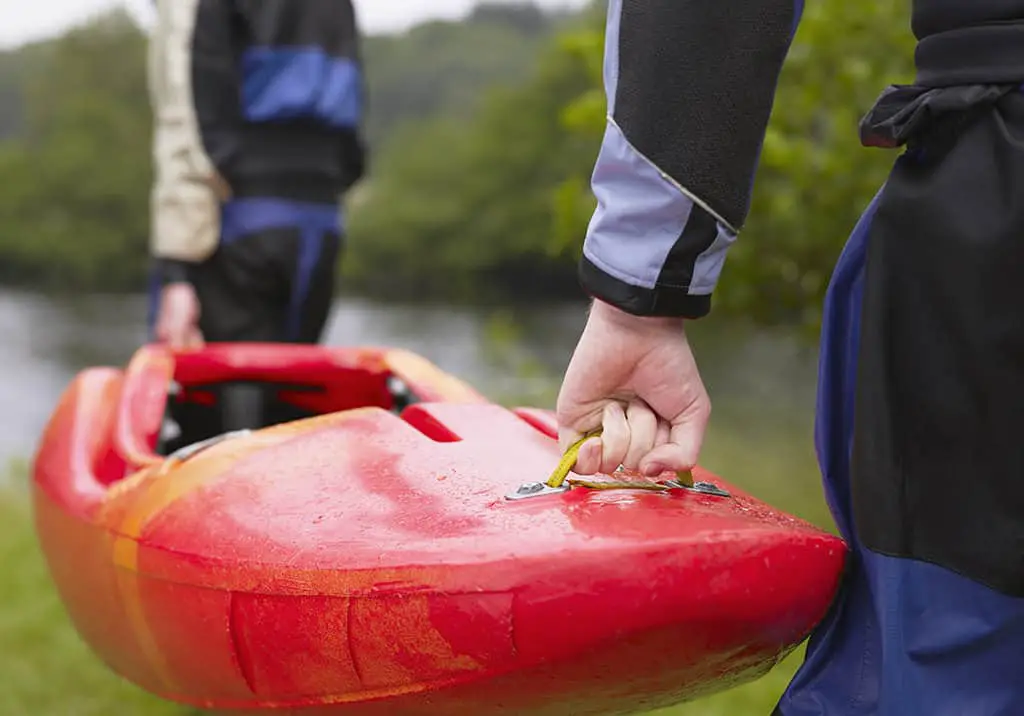
Kayaks can generally be carried by one person, but transporting a canoe with 2 people can also be deemed an easy task, depending on the canoe material and how long your trek is to the water. For heavier canoes or when carrying gear inside it, use of a canoe cart can be helpful. A cart makes it oh so easy to get from Point A to Point B. We’ve encountered several “put in” locations that provide these, but it’s best to double check prior to your arrival.
Stability Means Mobility
That’s right! Whether you feel most stable in a canoe or a kayak, that stability will enable you to have the mobility to move freely and easily as you paddle. While you may feel comfortable in either, there are some differences to delve into.
Canoes and kayaks are both easy to paddle once you’ve been out a few times and experienced getting out of potential jams and paddling in various water currents. Having paddled a canoe for 20 years and a kayak currently for 15 years, I honestly feel more stable in a kayak. That said, an experience canoeist will rarely find themselves in a situation of capsizing. It might happen though, and in my 20 years I’d capsized twice. So far, I’m 0 for 0 in a kayak.

For the sake of argument, however, a majority seem to believe canoes have the feeling of stability more so than kayaks. You are, in fact, higher off the water and, therefore, able to better see what lies ahead. As the saying goes, “still waters run deep.” If you’re paddling through a narrow run or waters with submerged rocks or logs, paddling towards the still water is your best bet.
When it comes to portage, a canoe may well be easier to carry over an obstacle in the river than a kayak. You simply are able to balance yourself and exit the canoe easier than from a closed design kayak.
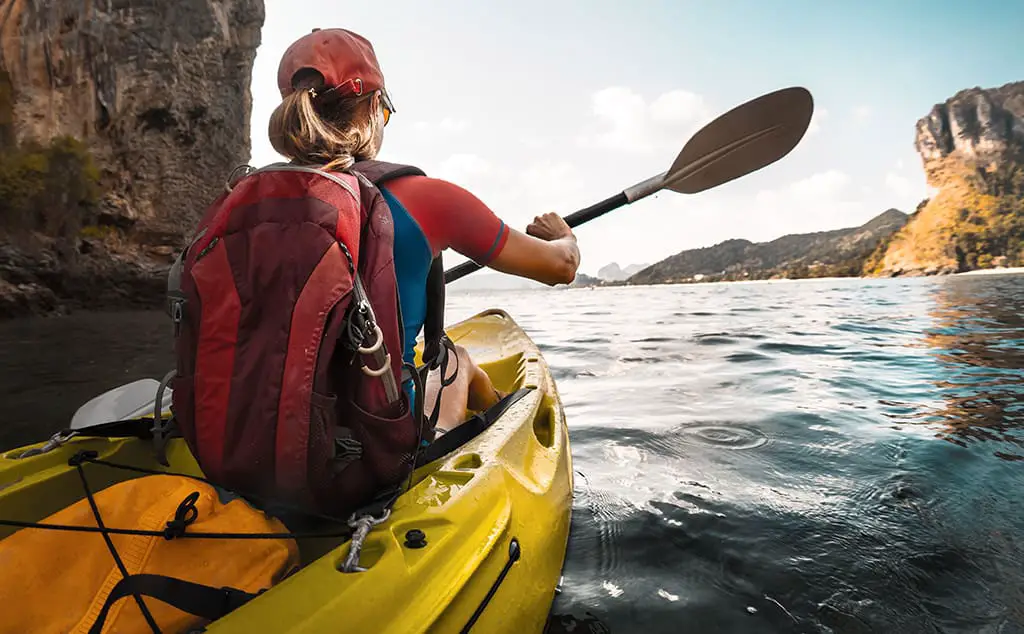
For tracking and swiftness, the kayak is going to win out. Less of the hull is actually in the water which makes maneuverability a breeze. While paddling a canoe and keeping a forward momentum is certainly not difficult, a kayak seems to take less effort due to its lower center of gravity and use of a double-sided paddle.
When it comes to comfort, canoeists have the ability to move around a bit more. Many even feel comfortable standing up and stretching their legs while on the water. While one person can handle a canoe alone, you’ll generally see a duo paddling. This gives one person the opportunity to grab some lunch, pass a drink to the other or give one a break from paddling for a spell. Unless you are in a tandem kayak, solo paddlers are not afforded those same opportunities.
Storage
Canoes have the upper hand for storage. For a family outing, a canoe is the only way to go. If you wish to bring along 50+ pound Rover, he’s going to enjoy that canoe ride a lot more – you’d even have room for his large water bowl.
Canoe camping is a sport I participated in for many years. Even with two paddling a canoe, you have plenty of space for things like a cooler, camp chairs, tent, and clothes packed in a dry bag. It makes for a fun adventure and packed strategically, gives you more room that you’d imagine.
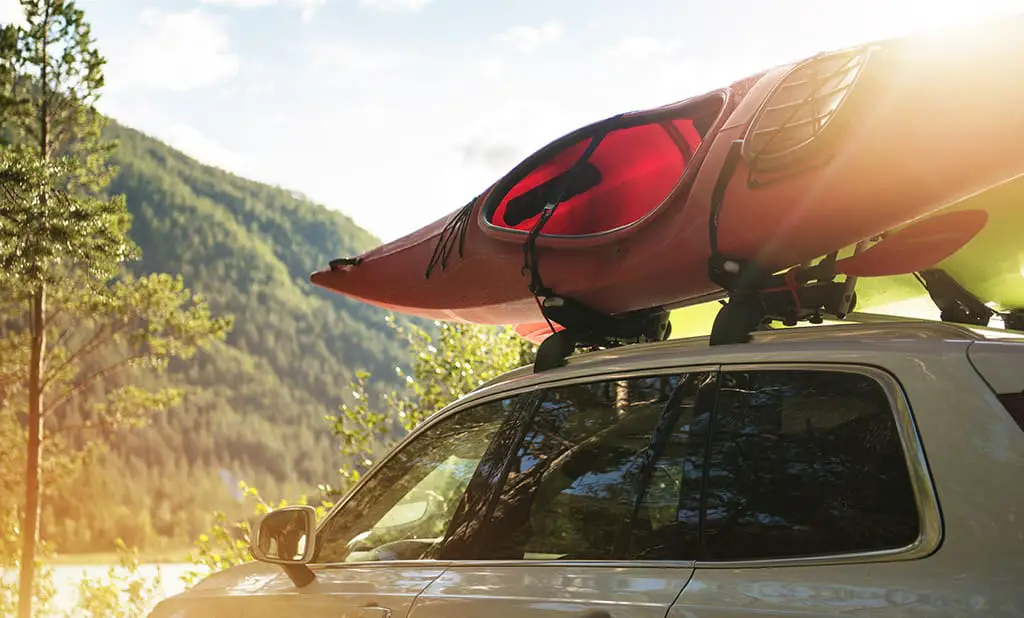
Kayak models can be found with a storage hatch, a center well at one or each end on top of the kayak. A hatch style lid that latches securely over the well keeps it dry. While these are not huge, it provides enough storage for food and some accessories needed for your voyage. Without the storage hatch, you’ll still have room to carry food, a beverage and a few small items.
Kayaks can still provide a camping experience. Think of a kayak as your tiny home on water. With the proper backpacking equipment and resourcefulness, it can be packed in lightweight fashion for overnight expeditions.
Conclusion
To arrive at the answer of what’s best – canoe vs. kayak, the final decision comes down to you. Consider your lifestyle, length of trips you’ll take, storage needs and what you want from your paddling experience.
No matter which one is right for you, being on the water and enjoying the day is what it’s all about. Bring the sunscreen, some snacks, a life jacket and for sure, don’t forget that paddle. Now, go have some fun!
